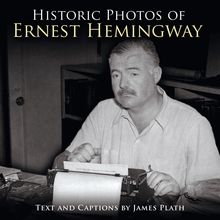Historic Photos of Detroit in the 50s, 60s, and 70s , livre ebook
166
pages
English
Ebooks
2011
Vous pourrez modifier la taille du texte de cet ouvrage
Obtenez un accès à la bibliothèque pour le consulter en ligne En savoir plus
Découvre YouScribe en t'inscrivant gratuitement
Découvre YouScribe en t'inscrivant gratuitement
166
pages
English
Ebooks
2011
Vous pourrez modifier la taille du texte de cet ouvrage
Obtenez un accès à la bibliothèque pour le consulter en ligne En savoir plus
Publié par
Date de parution
20 septembre 2011
Nombre de lectures
1
EAN13
9781618583925
Langue
English
Poids de l'ouvrage
6 Mo
In 1950 Detroit was the fifth most populous city in the United States with 1.8 million people living within its boundaries. Its downtown streets bustled with activity. Away from the city center, the neighborhoods were vibrant and active. By 1979, however, the Motor City had lost over one third of its residents. Factories, shops, and theaters closed down, businesses moved to the suburbs, neighborhoods began deteriorating, and crime was on the rise. Despite the city’s problems, the bonds of friendship and family along with memories of “the good old days” compelled some Detroiters to remain near their roots and continue life as usual in and around the city.
Historic Photos of Detroit in the 50s, 60s, and 70s documents what a Metro Detroiter would have experienced through those decades, from the commonplace—like bad traffic and bad weather—to the historic—like a visit from John F. Kennedy and a baseball world championship. In this companion volume to Historic Photos of Detroit, Mary J. Wallace gives readers an inside look at the ups and downs of one of the most interesting and relevant cities of the twentieth century.
Publié par
Date de parution
20 septembre 2011
Nombre de lectures
1
EAN13
9781618583925
Langue
English
Poids de l'ouvrage
6 Mo
Turner Publishing Company
200 4th Avenue North • Suite 950 Nashville, Tennessee 37219
445 Park Avenue • 9th Floor New York, New York 10022
www.turnerpublishing.com
Historic Photos of Detroit in the 50s, 60s, and 70s
Copyright © 2011 Turner Publishing Company
All rights reserved.
This book or any part thereof may not be reproduced or transmitted in any form or by any means, electronic or mechanical, including photocopying, recording, or by any information storage and retrieval system, without permission in writing from the publisher.
Library of Congress Control Number: 2011931483
9781618583925
Printed in the United States of America
11 12 13 14 15 16 17—0 9 8 7 6 5 4 3 2 1
Table of Contents
Title Page Copyright Page ACKNOWLEDGMENTS PREFACE LIVING THE AMERICAN DREAM - 1950-1959 WITNESSING PUBLIC TRIUMPHS AND TRAGEDIES - 1960–1969 STRUGGLING FOR A RENAISSANCE AGAINST ALL ODDS - 1970-1979 NOTES ON THE PHOTOGRAPHS
Girl Scouts salute Queen Juliana of the Netherlands as she visits Detroit on her trip to the United States in 1952. Four years earlier she became queen upon her mother’s (Queen Wilhelmina) abdication. Queen Juliana’s husband Prince Bernhard of Lippe-Biesterfeld is at back right, wearing glasses.
ACKNOWLEDGMENTS
This volume, Historic Photos of Detroit in the 50s, 60s, and 70s, is a result of the cooperation and efforts of many individuals and institutions. It is with great thanks that we acknowledge the valuable contribution of the Walter P. Reuther Library, Wayne State University (WSU) for its generous support.
We would also like to thank the following individuals for their support, contribution, and assistance:
Elizabeth Clemens, Audiovisual Archivist, Walter P. Reuther Library, WSU Kathleen Schmeling, Associate Director, Walter P. Reuther Library, WSU Mike Smith, Director, Walter P. Reuther Library, WSU
On a personal note, the author would like to thank her husband, Jim, and daughters, Megan and Lily, for their encouragement and support.
PREFACE
Detroit has thousands of historic photographs from the 1950s, 1960s, and 1970s that reside in archives, both locally and nationally. This book began with the observation that, while those photographs are of great interest to many, they are not easily accessible. During a time when Detroit is looking ahead and evaluating its future course, many people are asking, “How do we treat the past?” These decisions affect every aspect of the city—architecture, public spaces, commerce, infrastructure—and these, in turn, affect the way that people live their lives. This book seeks to provide easy access to a valuable, objective look into the not-so-distant history of Detroit in those three pivotal decades of change.
The power of photographs is that they are less subjective than words in their treatment of history. Although the photographer can make decisions regarding subject matter and how to capture and present it, photographs do not provide the breadth of interpretation that text does. For this reason, they offer an original, untainted perspective that allows the viewer to interpret and observe.
This project represents countless hours of review and research. The researchers and writer have reviewed thousands of photographs in numerous archives. We greatly appreciate the generous assistance of the individuals and organizations listed in the acknowledgments of this work, without whom this project could not have been completed.
The goal in publishing this work is to provide broader access to this set of extraordinary photographs that seek to inspire, provide perspective, and evoke insight that might assist people who are responsible for determining Detroit’s future. In addition, the book seeks to preserve the past with adequate respect and reverence.
With the exception of touching up imperfections caused by the damage of time and cropping where necessary, no other changes have been made. The focus and clarity of many images is limited to the technology and the ability of the photographer at the time they were taken.
The work is divided into decades. Beginning with photographs of the Motor City in 1950, at the height of Detroit’s population of 1.8 million, the first section records images through the end of the 1950s of the booming automobile industry, an expanding downtown skyline, and citizens at leisure. The second section spans from 1960 to 1969, a decade in which significant national attention was drawn to the city due to a preliminary “I Have a Dream” speech by Dr. Martin Luther King, Jr., at Cobo Hall, Motown Records’ birth and growing popularity, and the infamous race riot in 1967 that resulted in over 40 deaths and hundreds of injuries. Section Three moves from 1970 to 1979, a period of uncertainty over the city’s future, but also characterized by a bold determination to create a lasting legacy for decades to come.
In each of these sections we have made an effort to capture various aspects of life through our selection of photographs. People, commerce, transportation, infrastructure, religious institutions, and educational institutions have been included to provide a broad perspective.
We encourage readers to reflect on this era as they go walking in Detroit, strolling through the city, its parks, and its neighborhoods. It is the publisher’s hope that in utilizing this work, longtime residents will learn something new and that new residents will gain a perspective on where Detroit has been, so that each can contribute to its future.
—Todd Bottorff, Publisher
William “Count” Basie performs at the P’Jazz Concert series, a series of jazz concerts on the outdoor terrace of the Hotel Pontchartrain. This day’s performance was extra special because afterward, Basie was presented with a grand-piano-shaped birthday cake to celebrate his 73rd birthday (which was really two days later on August 21, 1977).
LIVING THE AMERICAN DREAM
1950-1959
The decade of the 1950s began with Detroit as the fifth largest city in the country. That year Detroit’s population peaked at 1.8 million. The factories that had been turned into defense plants during the war began to produce automobiles once again. The returning veterans found their old jobs waiting for them in the revitalized automobile industry. Some of the veterans chose to use the GI Bill’s generous tuition incentive to go to college. Every morning and evening, streets of Detroit were full with those going to work or to school. At other times the city was bustling with those using their leisure time to shop, go to the movies, or even watch a parade.
For most citizens, life in Detroit in the 1950s was ideal. Shopping was an easy streetcar ride or bus ride to such downtown retailers as J. L. Hudson’s, Crowley Milner’s, or Kern’s Department Store. If one wanted a quick hamburger and milkshake while shopping downtown, the lunch counters at Kresge’s or Woolworth’s were great places to stop. For a more extravagant steak dinner, Carl’s Chop House or Danny’s Gin Mill and Chop House were tasty options too.
Motor City sports teams presented enough excitement to keep all fans happy. The Tigers remained a Detroit favorite despite that after 1950, they failed to make it to the post season at all in the decade. Detroit got its own professional basketball team in 1957 when the Fort Wayne Pistons moved to Detroit from Indiana. The Detroit Red Wings, led by Gordy Howe, dominated the NHL, taking the Stanley Cup in 1950, 1952, 1954, and 1955. Detroit even had a winning professional football team in the 1950s—the Detroit Lions won the NFL Championship in 1952, 1953, and 1957.
Entertainment fare was impressive as well. On any given night, one could catch a prominent jazz or blues musician performing in one of the clubs in Detroit’s African American environs. There was even a jazz festival at the state fairgrounds featuring well-known performers such as Dinah Washington and Ray Brown. Rock ’n’ roll was taking root with young people in Detroit, just like everywhere else in the world. Teenagers could hear the top hits broadcast by Detroit-area disc jockeys on local radio stations like WKMH 1310 AM and CKLW 800 AM. To take in a movie or a live show, one simply had to walk down Monroe Street or check out the Riviera Theater or the new Ford Auditorium.
Detroiters loved their parades and celebrations, and in the 50s the city celebrated a great deal. In 1951 Detroit commemorated the 250th anniversary of its founding with a parade and a speech by President Truman in front of City Hall. Every summer throughout the decade, Detroit and Windsor celebrated with the International Freedom Festival, and of course every Thanksgiving the Hudson’s Thanksgiving Day Parade made its way down Woodward. Detroit was a required stop for political candidates and foreign heads of state, and their appearance in town usually meant another parade or at least another reason to get together to have a good time.
The look of the city was beginning to change as construction of buildings resumed in the 1950s. This included the City-County Building in 1955 and the National Bank of Detroit Building on Griswold in 1959. With more and more students attending college, Wayne State University, north of downtown, needed to add several buildings during the decade, so the Purdy Kresge Library and the McGregor Memorial Conference Center were constructed. The Veteran’s Memorial Building, the Ford Auditorium, and the Civic Center Park spruced up the riverfront and marked the beginning phases of Detroit’s grand plan to build a Civic Center.
Nevertheless, Detroit was not free from the typical problems of most big cities in the 1950s. There were issues of housing and job discrimination and police brutality against some black Detroiters. The air was polluted and streets were crowded with traffic. The houses in Detroit were getting old and run down. Areas of the city were considered slums. Even the nicer houses were crowded togeth














